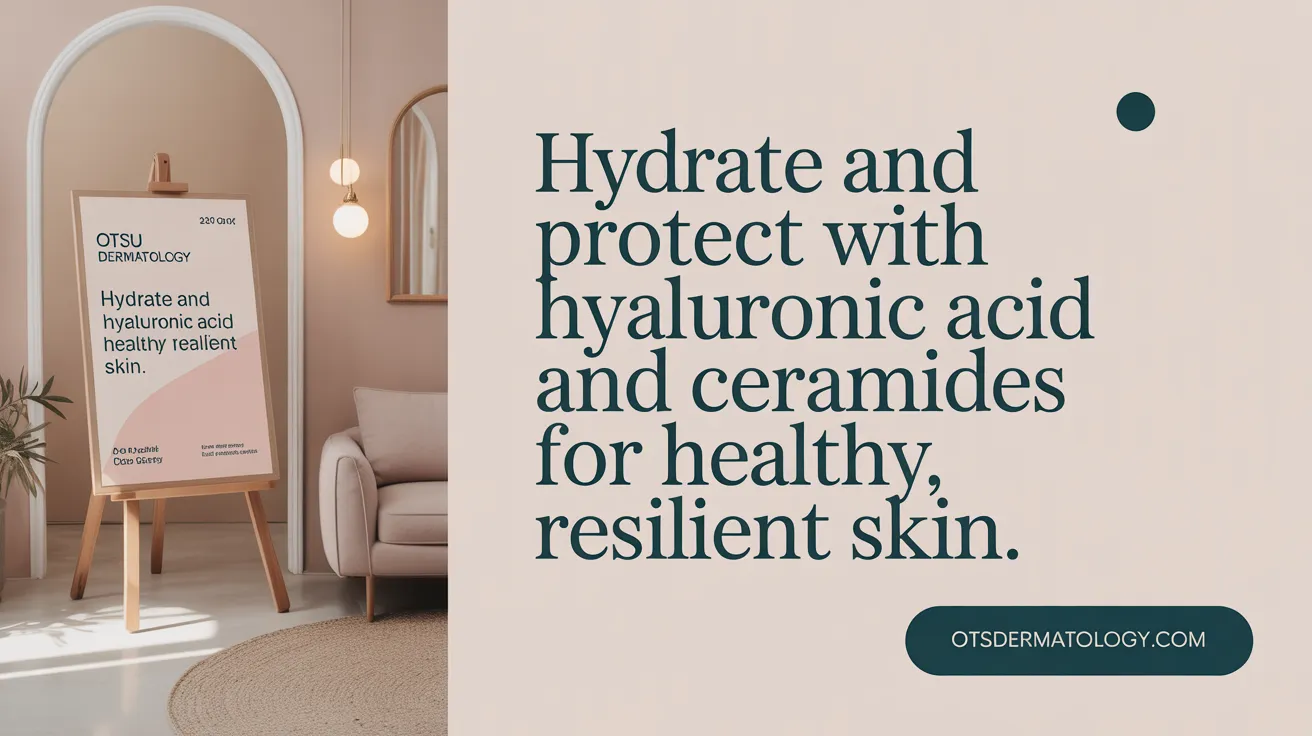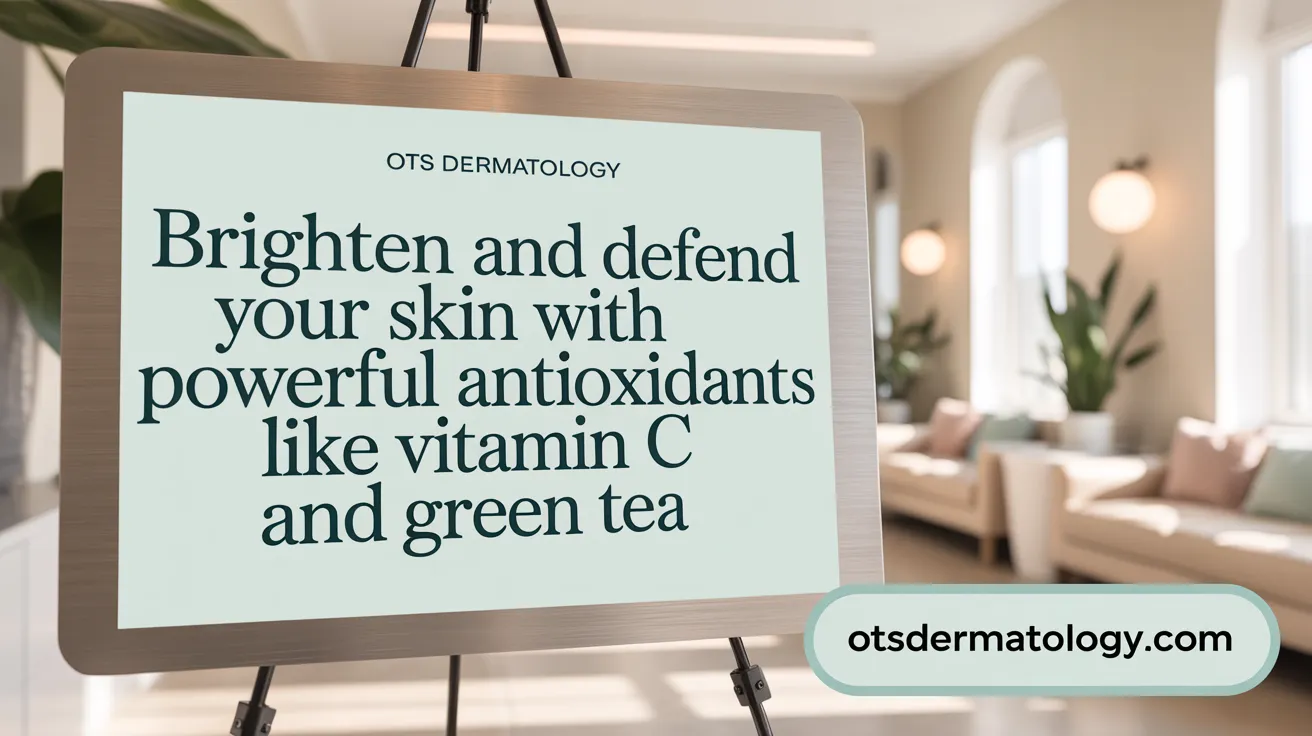Why Understanding Skincare Ingredients Matters
In the ever-expanding world of skincare, consumers are bombarded with countless products boasting various ingredients with promises of glowing, youthful skin. However, not all ingredients live up to their claims. Backed by rigorous scientific evidence and dermatologist consensus, certain ingredients consistently deliver proven benefits. This article delves into the science behind these key skincare ingredients, exploring how they work, their efficacy, and how to incorporate them into an effective skincare routine.
The Foundation of Scientific Evaluation in Skincare

How is the efficacy and safety of skincare ingredients established?
The efficacy and safety of skincare ingredients are confirmed through a combination of rigorous scientific methods. These include in vitro (test tube), ex vivo (outside the living organism, like skin samples), in vivo (living organism), and clinical studies, with peer-reviewed clinical trials considered the gold standard. Such studies ensure that ingredients deliver the promised benefits safely.
Importance of scientific evidence in skincare ingredient efficacy and safety
Scientific evidence validates that ingredients can effectively improve skin health while minimizing adverse effects. Without this, claims may be unreliable or unsafe. This research-backed approach informs dermatologists and consumers alike, guiding the selection of ingredients proven to benefit skin conditions such as aging, acne, hyperpigmentation, and dryness.
Types of scientific studies validating ingredients
- In vitro: Tests on cells or tissues.
- Ex vivo: Experiments on extracted skin samples.
- In vivo: Trials conducted on living organisms.
- Clinical trials: Controlled studies on human volunteers under specialist supervision.
Role of formulation, absorption, and stability in ingredient effectiveness
An ingredient’s effectiveness depends heavily on how it is formulated. Key factors include:
- Absorption: Molecular size and structure (typically below 500 Daltons) influence penetration into skin layers (ingredient penetration factors).
- Stability: Ingredients must remain stable and not degrade, ensuring consistent performance (skincare product stability.
- Compatibility: Ingredients should not react negatively with each other or the skin (ingredient compatibility importance.
Proper formulation maximizes an ingredient's delivery to the target skin layer, enhancing benefits while reducing irritation risks (formulation of skincare ingredients. Stability testing guarantees products maintain their potency from manufacturing through use.
In summary, scientific validation combined with smart formulation principles ensures skincare ingredients are both safe and effective.
Hydration Boosters: Hyaluronic Acid and Ceramides

What are the benefits of hyaluronic acid and ceramides in skincare?
Hyaluronic acid is a powerhouse humectant naturally present in the skin. It holds up to 1,000 times its weight in water, making it incredibly effective at attracting and retaining moisture. This hydration boost plumps the skin, reducing the appearance of fine lines and improving overall elasticity. It's gentle enough for frequent application and suitable for all skin types, including sensitive skin.
Ceramides, on the other hand, are essential lipids that play a crucial role in skin barrier repair. They help fortify and strengthen the skin's natural barrier, preventing moisture loss and protecting against environmental stressors. This barrier reinforcement keeps skin hydrated and healthy, especially benefitting dry or sensitive skin types.
Together, hyaluronic acid and ceramides offer complementary benefits. While hyaluronic acid pulls moisture into the skin, ceramides lock it in by restoring the barrier, creating a more resilient, hydrated, and youthful complexion.
Benefits for Different Skin Types
- Dry Skin: Ceramides provide much-needed barrier repair and moisture retention; hyaluronic acid deeply hydrates without heaviness.
- Oily and Combination Skin: Hyaluronic acid offers hydration without clogging pores; ceramides help maintain balanced moisture and barrier function.
- Sensitive Skin: Both ingredients soothe irritation; hyaluronic acid hydrates gently, and ceramides protect and calm the skin.
Using products containing these ingredients can help maintain skin health, reduce dryness, improve texture, and strengthen skin's defenses against environmental damage.
The Powerhouses of Anti-Aging: Retinoids and Bakuchiol

How do retinoids and bakuchiol contribute to anti-aging?
Retinoids, which are derivatives of vitamin A, are celebrated in skincare for their ability to enhance skin cell turnover and boost collagen synthesis. This dual action helps diminish the appearance of fine lines and wrinkles, refines skin texture, and even combats acne effectively. These benefits are supported by numerous clinical studies showing their ability to renew the skin and reduce signs of aging.
Meanwhile, bakuchiol serves as a natural, gentler alternative to retinoids. Derived from the babchi plant, it similarly stimulates collagen production and delivers anti-aging effects without the harsh irritation some experience with retinoids. This makes bakuchiol an excellent option for those with sensitive skin or for individuals seeking a less potent treatment suitable for daytime use.
Usage recommendations and side effects
Retinoids require careful introduction to skincare routines; starting with small amounts and gradually increasing frequency helps minimize dryness, redness, and irritation, common side effects at the onset of use. It is also advised to apply retinoids at night and use sunscreen during the day, as retinoids can increase sun sensitivity.
Bakuchiol, on the other hand, offers greater tolerance and can be used more flexibly, including in the daytime. Its lower irritation profile enables easier incorporation into a variety of skincare regimens, even for sensitive or reactive skin types.
Both ingredients significantly enhance skin vitality and appearance by targeting aging through collagen stimulation and improved skin renewal, making them cornerstone actives in modern anti-aging skincare.
Antioxidants That Protect and Brighten: Vitamin C and Green Tea Extract

What roles do vitamin C and green tea extract play in skincare?
Vitamin C is a powerful antioxidant crucial for promoting collagen synthesis, which helps maintain skin firmness and reduce wrinkles. It also brightens the complexion and mitigates hyperpigmentation and dark spots, resulting in a more even skin tone. The effectiveness of vitamin C heavily depends on its form; stable derivatives such as ascorbyl palmitate are preferred in skincare formulations due to their lower irritation potential and suitability for daily use.
Green tea extract is rich in catechins, natural antioxidants that fight free radicals responsible for skin aging. Besides its protective antioxidant effects, green tea also exhibits anti-inflammatory properties, helping to soothe the skin and reduce redness. It provides defense against UV damage and oxidative stress, making it beneficial for skin prone to environmental damage and premature aging. For more details on these benefits, see Green tea extract as an antioxidant.
Forms and stability of vitamin C in products
Vitamin C in skincare is commonly found as L-ascorbic acid or stable derivatives like ascorbyl palmitate and esters. L-ascorbic acid is the gold standard for collagen stimulation but can be unstable and irritating to sensitive skin. Derivatives offer enhanced stability, longer shelf life, and gentler effects without sacrificing antioxidant benefits, making them highly effective for regular application. Learn more about the Vitamin C antioxidant properties and L-ascorbic acid (vitamin C) effects on skin.
In combination, vitamin C and green tea extract serve as a dynamic duo in antioxidant skincare, supporting skin health by promoting collagen production, reducing pigmentation issues, calming inflammation, and protecting against environmental stressors. Their scientifically supported benefits make them indispensable in many anti-aging and brightening skincare routines.
Addressing Acne and Oily Skin: Salicylic Acid, Niacinamide, and Azelaic Acid
Which ingredients are most effective for acne and oily skin?
Salicylic acid, niacinamide, and azelaic acid are widely recognized as effective ingredients for managing acne and oily skin.
How does salicylic acid help with acne and oily skin?
Salicylic acid is a beta hydroxy acid (BHA) that excels at penetrating oily pores. It exfoliates dead skin cells inside the follicle and reduces inflammation, clearing out debris and bacteria that cause breakouts. This action improves skin texture and is well supported in clinical studies as an effective acne treatment.
What benefits does niacinamide provide for oily and acne-prone skin?
Niacinamide (vitamin B3) helps regulate sebum production, which reduces oiliness. It also minimizes pore size and calms skin inflammation, addressing redness and irritation common in acne-prone skin. Furthermore, niacinamide improves hyperpigmentation and strengthens the skin barrier. Its broad tolerability and multiple effects make it a popular choice for sensitive or acne-prone skin.
Why is azelaic acid useful for acne and how does it work?
Azelaic acid possesses anti-inflammatory properties that effectively treat acne and rosacea. It also lightens the skin by inhibiting melanin production, helping to reduce post-acne hyperpigmentation. Products with azelaic acid concentrations up to 15% are available, with higher strengths requiring a prescription. Its dual action of reducing inflammation and brightening skin tone makes it valuable in acne skincare routines.
Exfoliation Essentials: Alpha Hydroxy Acids and Their Benefits
How do alpha hydroxy acids (AHAs) benefit the skin?
Alpha hydroxy acids (AHAs) in skincare are a group of natural acids widely used in skincare for their exfoliating properties. Common AHAs include glycolic acid benefits, lactic, tartaric, and citric acids, each derived from natural sources such as sugar cane or fruit extracts.
AHAs work by loosening the bonds between dead skin cells on the surface, promoting their removal and revealing smoother, fresher skin beneath. This exfoliation with AHAs process improves overall skin texture, enhances tone uniformity, and supports better skin product absorption.
Specific benefits of AHAs include:
- Reduction of fine lines and wrinkles: By encouraging cell turnover and collagen production, AHAs help minimize signs of aging (retinoids and anti-aging, science-supported natural cosmetics).
- Improved pigmentation and age spots: Regular use can fade uneven pigmentation and sun spots, leading to a brighter complexion (kojic acid benefits, hydroquinone for hyperpigmentation).
- Decreased pore size: AHAs help clear and shrink pores, reducing their appearance (azelaic acid for acne and rosacea).
- Support for certain skin conditions: Glycolic acid in particular is noted for aiding eczema and blackhead-prone skin (glycolic acid skincare benefits.
Considerations for use
While AHAs deliver visible skin improvements, they also carry a risk of mild irritation, especially in sensitive skin or at higher concentrations (managing skin irritation from actives). Users may experience redness or dryness initially.
Importantly, AHAs increase photosensitivity by thinning the outer skin layers temporarily. Therefore, daily application of broad-spectrum sunscreen is crucial to protect the skin from harmful UV rays and prevent premature aging or sun damage.
With proper use and sun protection, AHAs are a safe and effective skincare ingredient staple in exfoliation routines, promoting smoother, healthier skin.
Brightening and Pigmentation Control: Kojic Acid, Hydroquinone, and Tranexamic Acid
What ingredients are effective for hyperpigmentation and skin brightening?
Hyperpigmentation and uneven skin tone can be addressed using several scientifically supported ingredients, notably hydroquinone, kojic acid, and tranexamic acid.
Mechanisms of skin lightening agents
- Hydroquinone works by inhibiting the enzyme tyrosinase, which is critical in melanin synthesis. This effectively lightens dark spots, age spots, and areas affected by melasma (Hydroquinone for hyperpigmentation).
- Kojic Acid, derived from fungi, also inhibits melanin production by interfering with tyrosinase activity but tends to be milder, making it suitable for sensitive skin (Kojic acid benefits).
- Tranexamic Acid works by inhibiting the plasminogen/plasmin system in the skin, which reduces melanocyte activity and pigmentation (Tranexamic acid for pigmentation treatment.
Efficacy and safety considerations
- Hydroquinone is highly effective but may cause allergic reactions in some users and is recommended for use under medical supervision, generally limiting treatment to six months (Hydroquinone usage risks).
- Kojic acid offers a safer alternative for sensitive skin but may increase susceptibility to sunburn, so consistent sunscreen use is important (Kojic acid skin lightening.
- Tranexamic acid is gaining popularity for hyperpigmentation treatment due to its good tolerability and synergistic effects when combined with other lightening agents (Tranexamic acid effectiveness in hyperpigmentation.
Comparison of hydroquinone and alternatives
| Ingredient | Mechanism | Safety Profile | Use Recommendation |
|---|---|---|---|
| Hydroquinone | Inhibits melanin enzyme tyrosinase | Possible allergies, limit to 6 months use | Prescription advised |
| Kojic Acid | Tyrosinase inhibition (fungal origin) | Mild skin sensitization possible, safer for sensitive skin | OTC, requires sun protection |
| Tranexamic Acid | Reduces melanocyte activity via plasmin inhibition | Well-tolerated, fewer side effects | Often combined with other agents |
Using these agents as part of a tailored skincare routine, combined with daily sunscreen, optimizes skin brightening results while minimizing adverse effects. Always consider consulting a dermatologist for personalized treatment especially when using stronger agents like hydroquinone.
The Vital Role of Sunscreens: Mineral Filters Zinc Oxide and Titanium Dioxide

Why are mineral sunscreens important and how do they protect the skin?
Mineral sunscreens contain active ingredients like zinc oxide and titanium dioxide that physically block and reflect ultraviolet (UV) radiation. These ingredients provide broad-spectrum SPF sunscreen benefits against both UVA and UVB rays, which helps prevent sunburn, DNA damage, premature aging, and skin cancers.
Protection against UVA and UVB rays
Zinc oxide and titanium dioxide act as physical shields on the skin's surface. UVA rays penetrate deeply, contributing to wrinkles and skin aging, while UVB rays primarily cause sunburn and play a major role in skin cancer development. Mineral sunscreens defend against both types of UV radiation, making them crucial for overall skin protection.
Role in preventing wrinkles and skin cancer
Consistent use of mineral sunscreens with at least SPF 15 has been shown to reduce the incidence of squamous cell carcinoma by 40% and melanoma by 50% (SPF sunscreen filters benefits). Beyond cancer prevention, these sunscreens also slow visible signs of skin aging, such as fine lines and hyperpigmentation, by preventing UV-induced collagen breakdown.
Dermatologist recommendations and usage guidelines
Dermatologists widely recommend daily use of broad-spectrum mineral sunscreens, particularly SPF 30 or higher, for optimal protection. They are especially suitable for sensitive, rosacea-prone skin due to their gentle, non-irritating nature. Proper application—covering all exposed skin generously and reapplying every two hours during sun exposure—is vital to ensure effectiveness.
Incorporating Science-Backed Ingredients Into Your Routine
Why Keep Your Skincare Routine Simple and Evidence-Based?
A straightforward skincare routine focused on scientifically supported ingredients proves most effective. Dermatologists recommend a routine that cleanses, moisturizes, and includes sun protection tailored to your skin concerns. Avoiding excessive layering of products reduces the risk of irritation and preserves the benefits of active ingredients.
How to Safely Use Potent Active Ingredients
Introducing active ingredients gradually helps your skin adjust and reduces the chance of irritation. Start with one ingredient at a time to monitor skin reactions. For retinoids and alpha hydroxy acids (AHAs), begin with lower concentrations and apply intermittently, increasing frequency as tolerated.
Patch testing is especially important for people with sensitive skin. Applying products to a small skin area first can help identify potential reactions before widespread use.
Protect Your Skin Daily
Many effective actives, such as retinoids and AHAs, increase skin sensitivity to ultraviolet rays. Daily use of a broad-spectrum sunscreen (preferably mineral-based with zinc oxide or titanium dioxide) is essential to prevent sun-induced damage and irritation.
Expert Advice and Personalization
Consulting a dermatologist can provide personalized guidance to select ingredients compatible with your skin type and concerns. Professional advice ensures you benefit from proven actives while minimizing risks.
| Best Practices | Details | Benefits |
|---|---|---|
| Simplify Routine | Cleanse, moisturize, protect | Reduces irritation, improves efficacy |
| Introduce Slowly | One active at a time | Monitors skin response |
| Gradual Retinoid/AHA Use | Start low, increase slowly | Minimizes irritation |
| Patch Testing | Test small skin area | Prevents adverse reactions |
| Daily Sunscreen | Broad-spectrum mineral types | Protects from UV damage |
| Professional Guidance | Dermatologist consultation | Tailors regimen effectively |
Bringing It All Together: Trustworthy Ingredients for Healthy Skin
The science of skincare reveals that certain ingredients consistently deliver proven benefits backed by rigorous research and expert consensus. Hydrating agents like hyaluronic acid and ceramides, anti-aging staples such as retinoids and bakuchiol, and antioxidants like vitamin C and green tea extract work synergistically to enhance skin’s health and appearance. For concerns like acne, pigmentation, or sun damage, salicylic acid, niacinamide, azelaic acid, kojic acid, and mineral sunscreens are indispensable. Embracing simple, evidence-based routines that incorporate these ingredients wisely ensures skin protection, renewal, and vitality, underscoring that effective skincare is rooted in science, not hype.
